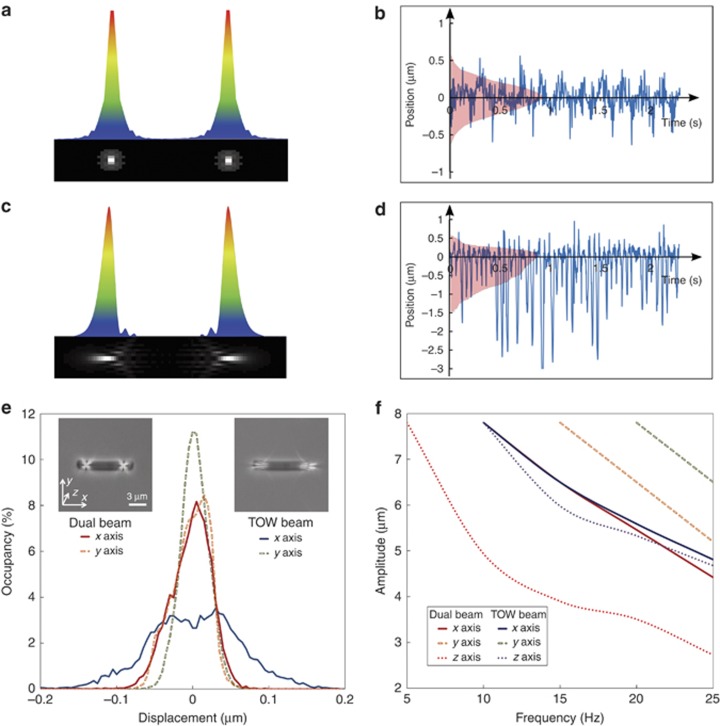Figure 5.
Comparison between conventional dual-beam tweezers and TOW tweezers. (a) Intensity profile of the Gaussian dual-beam trap. (b) Position distribution of a S. meliloti cell trapped by only one side of the dual-trap in an oscillating environment (that is, the sample is sinusoidally dragged at a frequency of 20 Hz and an amplitude of 2 μm), overlaid with the intensity profile of the trap (in pink). (c, d) Corresponding results for the TOW tweezers. (e) Occupation probability of a trapped silica rod around its equilibrium position in the two different traps. With the TOW tweezers, the micro-rod is more stably trapped in the y-direction yet still has the flexibility to move around its equilibrium position in the x-direction (desirable for stretching). Inserts show the location of each beam on the silica rod. (f) Plot of maximum oscillating amplitude vs. frequency at which the silica rod can stay in the three-dimensional trap, under the action of either dual-beam or TOW tweezers. Enhanced stability in the TOW tweezers is evident.

